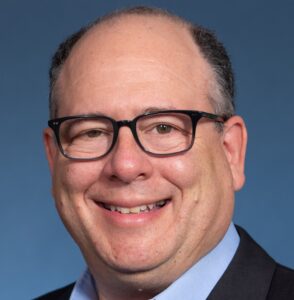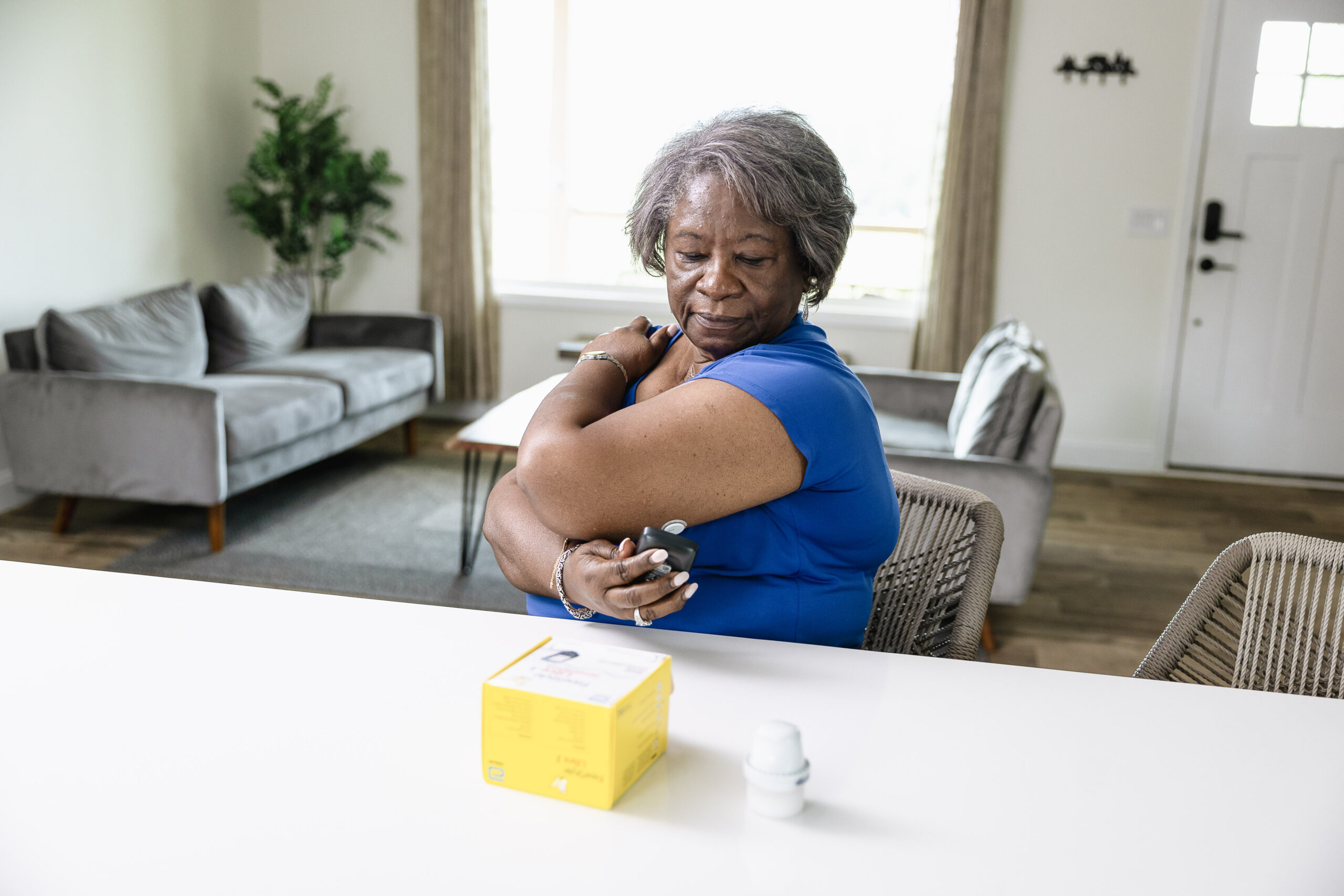Table of Contents
This content has been reviewed for accuracy by Mike Cantor, Chief Medical Advisor at Aeroflow Health.
Dive into our blog inspired by our webinar, “Health Plan Best Practices: Leveraging Continuous Glucose Monitors (CGMs) to Improve Diabetes Care,” where we discuss how health plans can support members to ensure CGMs are maximally effective in improving diabetes care, the future of CGM management and more. For a deeper understanding and comprehensive insights, don’t miss the chance to watch the webinar playback.
What is a continuous glucose monitor (CGM) and how does it work? How does a CGM improve the quality of care for people with diabetes, and what is the impact on costs of care and patient experience? How is the value of a CGM different for people with Type I vs Type II diabetes?
Dr. Gabbay: Continuous glucose monitors or CGM’s are one of the largest advances in diabetes care in the last decade. CGM’s are like a movie of someone’s day instead of photos that only show a quick snapshot. With CGM’s, you are able to get continuous glucose monitoring over 24 hours, as well as be alerted when glucose levels are too high or too low. These readings are particularly useful for clinicians. Something to note is that there are 3 types of continuous glucose monitors – those that continuously monitor over 24 hours, those that require intermittent scanning every 8 hours with a reporting device such as an iPhone and then the most recent model on the market is one that is inserted in the abdominal region and stays in place for 6 months. CGM’s allow people to better understand how their actions impact their insulin levels and what activities or lifestyle choices they can make to promote a healthier outcome. CGM’s, while a useful data tool, in its simplest and most impactful form is a lifesaver for many. Being able to be alerted when levels are dangerous can make all the difference between life and death. At the end of the day, all of these tools help manage diabetes more effectively and lead to better life quality for those living with diabetes.
Every 5 years, the American Diabetes Association publishes the Economic Costs of Diabetes report. This year, we’ve found that 1 in 4 healthcare dollars are spent on people with diabetes and their complications. Most of the cost by far comes from the complications of living with diabetes, such as, eye disease, kidney disease, nerve damage, strokes and more. CGM’s allow people to monitor glucose levels and keep them at healthy levels, therefore, preventing these complications that lead to higher costs. According to several studies of those with Type II diabetes, of those using a CGM, those individuals were less likely to go to the emergency room and/or be hospitalized.
CGMs are part of optimal management of diabetes – what are the other key factors for people with diabetes to successfully manage their diabetes? Where does diet and exercise fit in?
Sophie: CGM’s are a tool that constantly remind people about their goals. Whether that be what they are eating, drinking or their activity, they are getting real-time data on how their lifestyle is impacting their glucose levels. I have seen that those using a CGM are much more invested in their dietary and lifestyle choices than those who are not. CGM’s should be seen as a partner in care, not a fix all. CGM’s provide data but people have to choose to take action based on the data. In my world, diet and exercise are the two largest points of discussion in determining how to make an impact on the disease. By striving for a healthy body weight and trying to get in at least 150 minutes of moderate physical activity per week, those living with diabetes can more effectively manage the disease. When it comes to diet, I encourage patients to eat fewer foods that are highly processed and high in empty refined sugar and instead eat more whole grains, fiber, healthy fats and lean protein. Whole foods and plant-based options, in my opinion, are the gold standard. In addition to diet and activity, stress, water intake, and sleep can play a huge role in managing diabetes. I’d encourage patients to also work with their providers to determine what medications may be beneficial for their diabetes and if they are on medications, to speak with their providers before making any changes to their diet or exercise routines.
Is adherence a challenge for patients using CGMs? What are the barriers to patients successfully using CGMs, and what can be done to address those issues?
Sophie: Access due to lack of insurance coverage, transportation, or in general the cost being too high continues to be one of the largest barriers for patients needing CGM’s for their diabetes management. Additionally, the use of a CGM can often feel overwhelming and isolating. Historically, finger sticks have been the most common way of checking blood sugar levels, so for individuals who are now using CGM’s, even if they have family members with a history of diabetes, it can feel isolating to be the only one with a CGM. Today, providers are able to meet with patients via telehealth which has lowered some barriers to access; however, there are still those who may not have access to the internet. Our goal should be to figure out as many ways as it takes to meet these patients where they are and make it easy for them to get the care and medical supplies they need.
Gabbay: Medications have become easier for patients to access via their insurance coverage but for CGM’s there still remains red tape that creates gaps in access that leads to patient frustration. For those that have come to rely on CGM’s as their diabetes partner, the thought of not being able to have continued access is a real fear. Changes to health plan rules and regulations such as the restrictions that come along with pharmacy benefits or durable medical equipment benefits, can often cause a process of steps and documentation with clinicians and providers that cause those gaps in care.
What are the current recommendations about which patients qualify for CGMs? Have these recommendations changed recently, and if so, how?
Dr. Gabbay: Based on randomized controlled trials that the American Diabetes Association has supported, we found that regardless of age, if someone is on insulin, whether they have Type 1, Type 2 or gestational diabetes, everyone should be offered a continuous glucose monitor because of the benefits of use. CGM’s are safer and give better outcomes as far as blood glucose levels, especially when compared to hemoglobin A1C, which is a 3-month average of blood glucoses that can predict the major complications of diabetes. Patients have better health outcomes with CGM’s and so they are very much the standard of care. In just the last year, our research has shown that anyone on insulin should be offered a CGM and it has ultimately led to the Centers for Medicare and Medicaid Services (CMS) expanding its coverage to include CGM coverage for anyone on insulin or on agents that can cause low blood glucoses. Additionally, we’ve been advocating with the Veterans Administration and they have changed their rules to cover CGM’s for anyone on insulin. Recently, the conversation has shifted to how CGM’s might prove beneficial to those who are not using insulin. The research hasn’t proven strong yet but I expect this to be an ongoing focus point.

Michael Cantor, M.D.
Dr. Mike Cantor is a geriatrician and attorney who has extensive experience designing and implementing value-based care, quality improvement, and care management programs for healthcare providers and health plans. He works as a fractional (part-time) Chief Medical Advisor for Aeroflow Health, Uber Health, and other technology-enabled health services companies, value-based care organizations and digital health companies. Previous roles include: CMO for Bright Health Plan, an innovative health
insurer; CMO for CareCentrix, a leading outsourced home health, durable medical equipment, and post- acute care benefits manager recently acquired by Walgreens; and CMO for the New England Quality Care Alliance (NEQCA), the physician network affiliated with Tufts Medical Center, where he implemented network-wide quality improvement and care management programs for 150,000 managed care lives. He trained in internal medicine at Beth Israel Hospital in Boston and did his geriatrics fellowship at Harvard Medical School. He has degrees in law and medicine from the University of Illinois.

Sophie Lauver, MS, RD, LDN, NBC-HWC
Sophie Lauver is a Registered Dietitian and Board Certified Health and Wellness Coach passionate about helping people take control of their health and get excited about nutrition. Sophie has a Bachelor's degree in Communication from the University of Delaware and a Master’s degree in Dietetics from Eastern Michigan University. Sophie has worked in a wide variety of settings including hospitals, long-term care, rehabilitation, and wellness technology, and most recently, served as the director of the nation's largest diabetes prevention program. Sophie lives in Baltimore, MD with her husband, infant son, and their two dogs and two cats. When she’s not working with clients, she enjoys cooking, not doing dishes, trying new restaurants, and spending time being active outside (especially on warm and sunny days).

Robert Gabbay
Robert A. Gabbay, MD, PhD, FACP, is the Chief Scientific and Medical Officer for the American Diabetes Association (ADA), the global authority on diabetes. Dr. Gabbay leads the ADA’s efforts to drive discovery within the world of diabetes research, care and prevention. Previously, Dr. Gabbay served as the Chief Medical Officer and Senior Vice President at Joslin Diabetes Center, and Associate Professor at Harvard Medical School. At Joslin, he oversaw the clinical care for over 25,000 patients, as well as the education and care programs Joslin delivers nationally and internationally. His research focused on innovative models of diabetes care to improve and to enhance diabetes outcomes and improve the lives of people with diabetes. The reach of his work has been recognized through leadership roles in national and international activities to transform diabetes care. Dr. Gabbay has served as visiting professor, keynote speaker and organizing committees for global meetings of the ADA, International Diabetes Federation, Endocrine Society, and the Diabetes Technology Society. Along with an extensive peer reviewed publication record, his views have appeared in popular press such as the New York Times, CNN, Oprah, the Washington Post and NPR.





